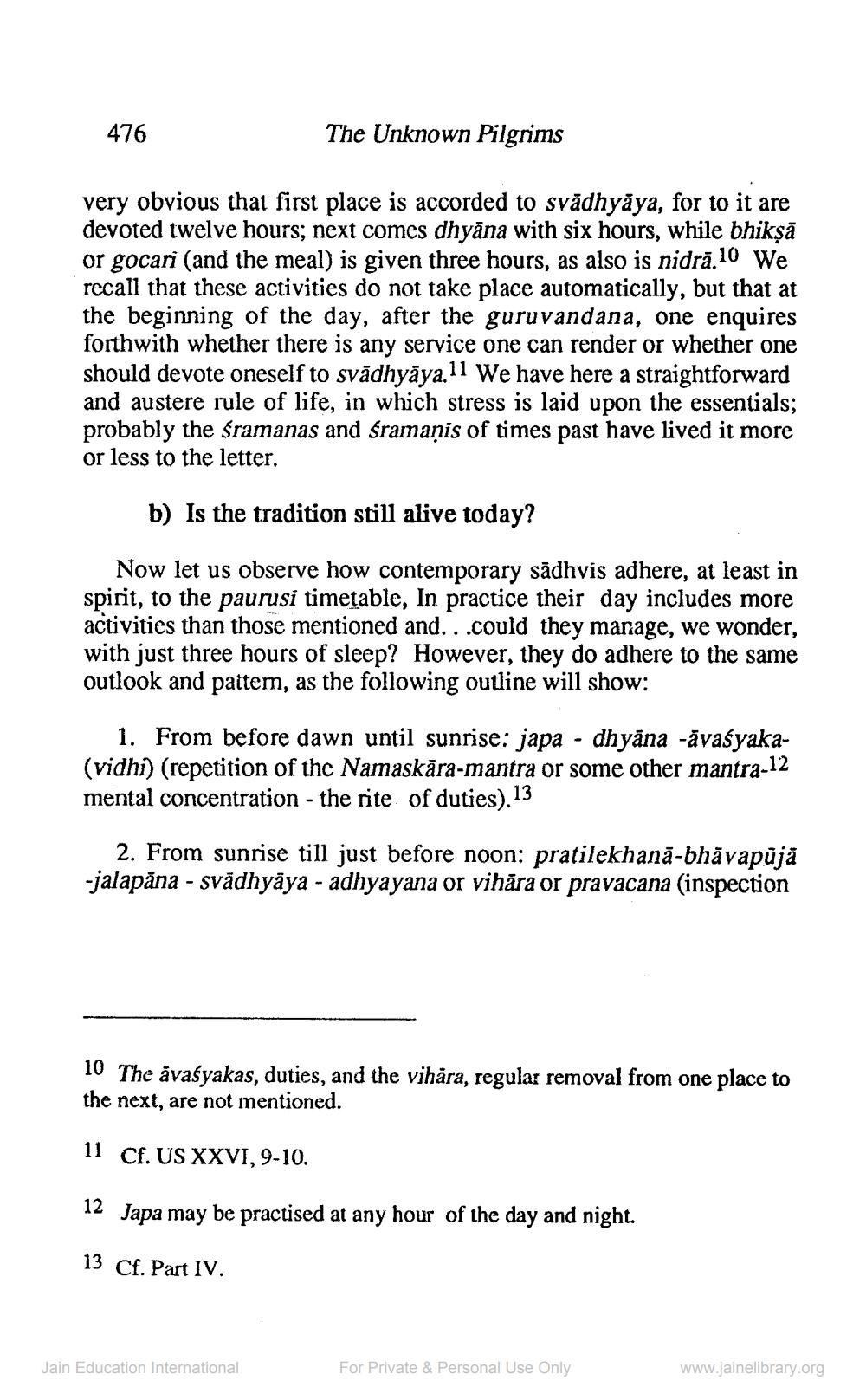________________
476
The Unknown Pilgrims
very obvious that first place is accorded to svādhyāya, for to it are devoted twelve hours; next comes dhyāna with six hours, while bhikṣā or gocari (and the meal) is given three hours, as also is nidrā.10 We recall that these activities do not take place automatically, but that at the beginning of the day, after the guruvandana, one enquires forthwith whether there is any service one can render or whether one should devote oneself to svādhyāya.11 We have here a straightforward and austere rule of life, in which stress is laid upon the essentials; probably the śramanas and śramaņis of times past have lived it more or less to the letter.
b) Is the tradition still alive today?
Now let us observe how contemporary sādhvis adhere, at least in spirit, to the pauruși timetable, In practice their day includes more activities than those mentioned and...could they manage, we wonder, with just three hours of sleep? However, they do adhere to the same outlook and pattern, as the following outline will show:
1. From before dawn until sunrise: japa - dhyāna -āvasyaka(vidhi) (repetition of the Namaskāra-mantra or some other mantra-12 mental concentration - the rite of duties).13
2. From sunrise till just before noon: pratilekhanā-bhāvapūjā -jalapāna - svādhyāya - adhyayana or vihāra or pravacana (inspection
10 The avasyakas, duties, and the vihåra, regular removal from one place to the next, are not mentioned.
11 Cf. US XXVI, 9-10.
12 Japa may be practised at any hour of the day and night.
13 Cf. Part IV.
Jain Education International
For Private & Personal Use Only
www.jainelibrary.org




